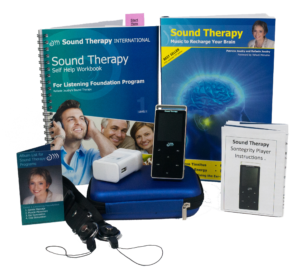Only 15 per cent of Australian babies are breastfed exclusively for the first five months of their lives, according to a new study by La Trobe University Mother and Child Health Research senior research fellow Dr Lisa Amir. This is a concerning statistic when we know that the incidence of gastro enteritis is 40% higher among formula fed babies, and the incidence of ear infections is 100% higher!Only 15 per cent of Australian babies are breastfed exclusively for the first five months of their lives, according to a new study by La Trobe University Mother and Child Health Research senior research fellow Dr Lisa Amir. This is a concerning statistic when we know that the incidence of gastro enteritis is 40% higher among formula fed babies, and the incidence of ear infections is 100% higher!
Ear infections have become a serious child health issue. Though they are hard to control with antibiotics, ear infections have contributed to the overuse of antibiotics by parents wanting to protect their children from harm.
Children who experience repeated ear infections are among those likely develop learning and auditory processing problems which may affect their academic progress. Failure to control the condition often leads to the use of grommets (ear ventilation tubes) surgically inserted through the ear drum. While it temporarily alleviates pressure in the middle ear, such surgery has the risk of leaving scar tissue on the ear drum.
A lack of information on ways to prevent ear infections leaves many parents at their wits end with repeated trips to the doctor, school missed, and concerns about weakening the child’s immune system and disrupting gut flora through too many courses of anti-biotics.
Breast feeding is one way to reduce the likelihood of ear infections. Another excellent support strategy is to use Sound Therapy to improve middle ear muscle function and assist the Eustachian tube to open normally. Because the Eustachian tube is closer to horizontal in babies and young children, it is harder for it to drain. Creating movement of the muscles through Sound Therapy can make a big difference and may mean that antibiotics and the need for grommets (ear ventilation tubes)can be avoided.To learn more about how Sound Therapy can enhance auditory development and help normal, healthy Eustachian tube function and prevent ear infections, visit our children’s page:http://www.soundtherapyinternational.com/v3/sound-therapy-for-children.html
There is an excellent article, “How Human Milk Protects Babies From Illness” on this link http://www.askdrsears.com/topics/breastfeeding/why-breast-best/how-human-milk-protects-babies-illness
Here is a quote from the article about how breast feeding affects the ears.“BREASTFED BABIES ARE HEALTHIERDerrick and Patrice Jelliffe, pioneers in breastfeeding research, stated that breastfed infants are "biochemically different." This difference in body chemistry may be the reason they are healthier. While babies are breastfeeding, they have fewer and less serious respiratory infections, less diarrhea, and less vomiting. When breastfed babies do become ill, they are less likely to become dehydrated and need hospitalization.“Here are some specific ways in which breastfeeding protects babies from illness:• Friendly to little ears. Ear infections are a childhood nuisance, often following on the heels of stuffy noses and colds. The middle ear fills with fluid, and eventually that fluid becomes infected, causing pain, especially in the middle of the night. Repeated ear infections, or those that go untreated, can lead to hearing loss. This is an important concern in young children, since hearing difficulties can interfere with language, and language problems can later affect reading skills.
Breastfeeding protects against ear infections in four possible ways:1. The many germ-fighting ingredients in human milk keep harmful bacteria from bothering baby, so that stuffed-up noses and ears are less likely to become infected middle ears.2. Because breastfed babies are fed in a more upright position, they're less likely to experience milk backing up through the eustachian tube into their ears; if this does happen during a breastfeeding session, human milk is less irritating to the tissues of the middle ear than infant formula.3. Breastfed babies have fewer, or at least less severe, colds than formula-fed babies. Fewer colds means fewer ear infections.4. Breastfed babies have fewer respiratory allergies, another cause of fluid building up in the middle ear, which sets the stage for bacteria to grow.”
Breastfeeding Reduces Ear Infections
December 21, 2011 |
children, ear infections, General
Tags: breast feeding, children, Drugs, ear infections, Eustachian tube, grommets, Sound Therapy
Sound Therapy is a unique treatment program, based on several decades of clinical research, which rehabilitates the ears and revitalises the brain, enhancing ear and brain function for life.
Categories
- A better way to support independent living
- Audio
- Audiology
- Auditory deprivation
- Auditory Processing
- autism
- BBE Process
- Brain
- Brain Optimisation
- Breathing
- Breathing
- Charities we support
- Chemical Toxins
- children
- Choosing the Music
- Classic Music
- Colds and infections
- conductor
- Covid
- Depression
- Digital Compression
- Dizziness
- Dystonia
- ear infections
- Ear muscles
- Ear Research
- Emotional Wellbeing
- Equipment
- General
- gut brain connection
- Headphones
- Hearing
- i-pod hearing damage
- Independant Media
- Indigenous Literacy Day
- Koorie Story telling
- learning difficulties
- Literacy
- Memory
- Meniere's
- musical talent
- Natural Health
- Nervous System
- Neuroscience
- Noise
- Nutritional Supplements
- Pauline McLeod
- Preventing Sudden Deafness
- Read and Exceed
- Reducing Noise exposure in Australia
- Research
- Sound Therapy
- Stress
- Supplements or drugs
- The Music
- Tinnitus
- Tinnitus Treatment
- Tomatis
- travel
- vaccination
- vertigo
- Videos


